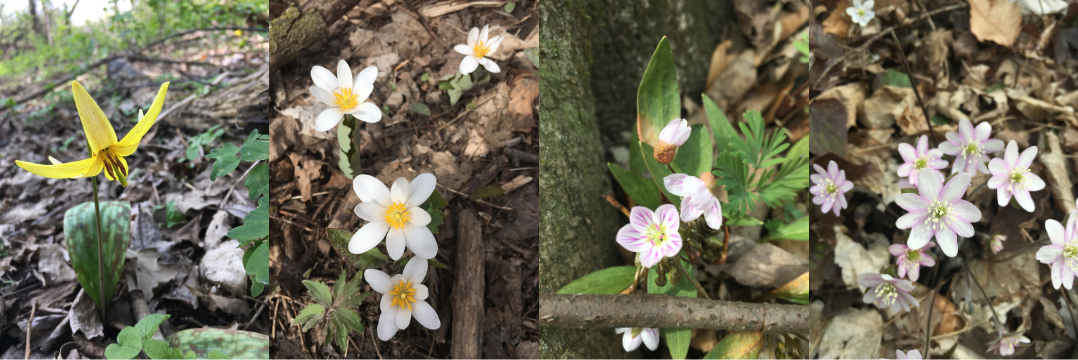As winter’s chill recedes, the land begins to awaken. Early blooming native plants are among the first to emerge, brightening our surroundings and providing vital nourishment for pollinators waking from their winter rest. These hardy species are perfectly timed to offer food for insects in search of sustenance at this early time of year.
Look out for these early bloomers: Trout Lily (Erythronium americanum), with its delicate yellow flowers nodding above speckled leaves; Bloodroot (Sanguinaria canadensis), which showcases white, star-shaped blooms and striking, lobed leaves; Spring Beauty (Claytonia virginica), marked by its small pink-to-white flowers; and Hepatica (Hepatica americana), whose colorful blue, purple, or white flowers often push through the remnants of snow, offering a feast for both insects and human eyes alike.

Pictured left to right: Trout Lily, Bloodroot, Spring Beauty, Hepatica. Photos: Siobhan Mullally.
As these plants begin to bloom, they provide essential food for early-season pollinators. Queen Bumblebees are typically among the first to emerge, having overwintered in the soil or under leaf litter. These queens seek nectar to fuel their energy as they establish new colonies. Similarly, solitary bees also awaken and forage on early blooms. The Mourning Cloak Butterfly (Nymphalis antiopa) is another early riser, often looking somewhat battered after a winter nap.
These early-blooming plants and their pollinators are the lifeblood of our ecosystems, adapting to harsh conditions and providing a powerful reminder of nature’s resilience. By planting native species, you can help ensure the survival of these essential pollinators, contributing to the delicate web of life that supports all things. Your garden can become a sanctuary for nature’s first signs of spring, bringing beauty and life to your doorstep.
